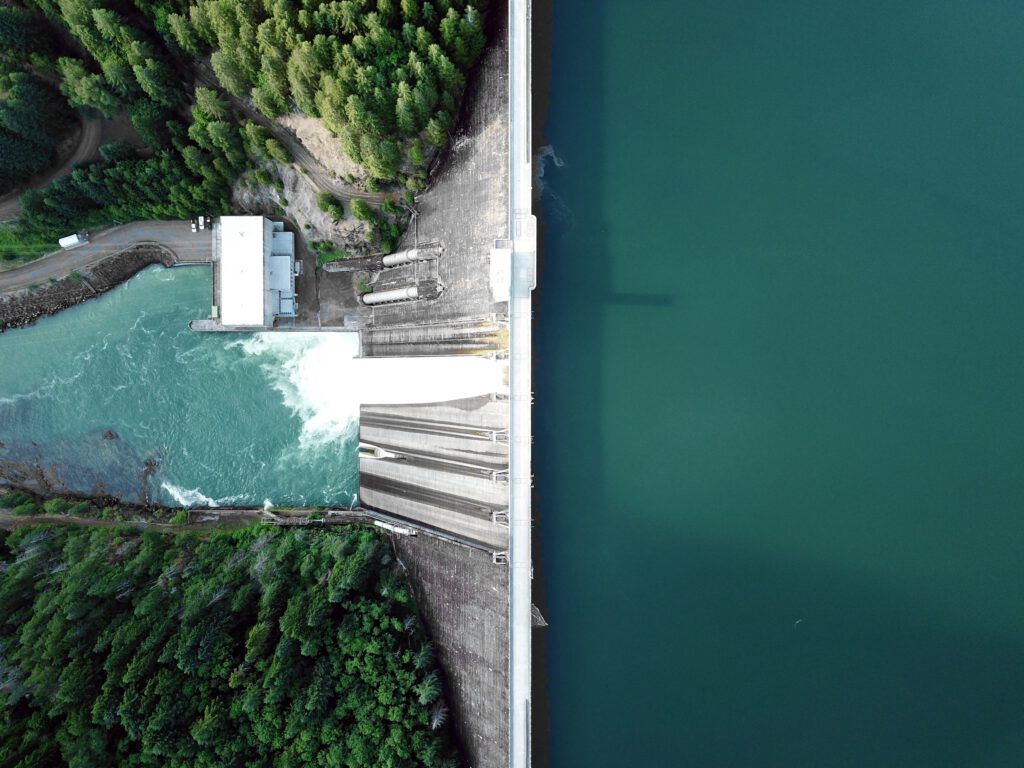Thousands of years ago, people used hydropower to turn paddle wheels on rivers to grind grain. Nowadays, hydropower is the most important and widely used renewable energy, representing 17% of total electricity production.[1]
We have previously discussed clean energy topics such as wind farms and wind/solar smart grid. Let’s dive into hydropower today and take a close look at the key facts about hydropower especially its development in China, and further look into the future of this powerful clean energy.
Efficiency of Hydropower
Hydropower is energy in moving water. Hydroelectricity generation starts with converting either the potential energy of water at a different elevation or the kinetic energy of moving water into electrical energy.
Hydropower plants convert about 90 percent of the energy in falling water into electrical energy. By comparison, fossil-fueled plants lose more than half of the energy content of their fuel as waste heat and gases. Hydropower is also the most reliable renewable energy available in the world by far, with constant and steady flow of water around the clock.
Hydropower is also flexible. By adjusting the amount of water flowing through the dams, hydropower can be increased or decreased very quickly to meet the changes in demand for power. Moreover, hydropower produces no emissions. During the process of hydroelectricity generation, there are no gases or waste products that contribute to air pollution.
All these advantages made Hydropower the most popular choice of clean energy. Taking the United Sates as an example, hydropower was the largest source of total annual U.S. renewable electricity generation until 2019. In 2020, hydroelectricity accounted for about 7.3% of total U.S. utility-scale electricity generation and 37% of total utility-scale renewable electricity generation. However, hydroelectricity’s share of total U.S. electricity generation has decreased over time, mainly because of increases in electricity generation from other sources.[2]
The New Horizon of Hydro Market
China is the largest producer of hydroelectricity, followed by Canada, Brazil, and the United States. Hydroelectricity used to be China’s largest renewable energy source and the second overall after coal. China’s potential hydropower capacity is estimated at up to 400 GW.[3] Therefore, there is considerable potential for further hydro development.
On 28 Jun 2021, the gigantic Baihetan (白鹤滩) hydropower plant launched 2 out of 16 1GW generating units. Just a few weeks earlier, the 10.2GW Wudongde(乌东德) hydro project, built upstream on the Jinsha River, has just been put into full operation.
All 16 units of the Baihetan hydropower plant are expected to be fully operational by July 2022 and will generate around 62.4 billion kWh of electricity annually, making it the world’s second-largest hydropower station behind China’s Three Gorges Dam (三峡水电站). This project is also seen as an important stepping stone towards Beijing’s carbon neutrality target.
“As a major project in China’s west-east power transmission program, Baihetan is the largest and most technically difficult hydropower project currently under construction in the world,” said President Xi Jinping, adding the project has marked a major breakthrough in China’s high-end equipment manufacturing.[4]
An ultra-high voltage (UHV) electricity transmission line connecting Baihetan to the eastern province of Jiangsu started construction in late 2020 and is expected to launch in 2022. Another UHV from Baihetan to Zhejiang province, also in eastern China, is waiting for Beijing’s approval.[5]
Regarding centralized energy projects, the rhetoric in the 14th Five-Year-Plan (2021-2025) is clearly different from that of the previous plan. The 13th FYP set that renewable construction in the “three northern” regions should be carried out in an “orderly manner,” whereas the 14th FYP basically has green-lighted for most of the centralized renewable plans.[6]
Jinsha River Upstream and Downstream, Yellow River Upstream and the Jizi Bay are all listed as green-lighted areas. As a result, Sichuan Province’s 14th FYP aims to complete the construction of 10 hydropower plant projects and start building another seven. We are keen to see more hydro projects driven by local efforts.

Photo by Wolfgang Hasselmann on Unsplash
Last but not least… Technology is the key!
Large dams have been controversially debated for several decades due to their large-scale and irreversible social and environmental impacts.
Environmental group have criticised the large-scale damming of the Yangtze and its tributaries because the over-engineering of the river has destroyed major habitats and damaged natural flood plains.
According to Allied Market Research, the global hydropower generation market is expected to reach $317.8 billion by 2027, growing at a compound annual growth rate of 5.9% from 2020 to 2027.[7]
Being a responsible investor, AvantFaire always keeps an eye on the ESG aspect of every project. We also believe that sustainable technology and creativity are the key to solutions.
The good sign is that the 14th FYP mentioned building a series of bump-hydro storage plants, as well as “demonstrations of battery storage, compressed air and flywheel storage”. It was the first time the FYP enlisted these new storage technologies as prioritised energy projects. We’re excited to find out what change will this bring to the scene of clean energy industry in China.
[1] https://www.usgs.gov/special-topic/water-science-school/science/hydroelectric-power-water-use?qt-science_center_objects=0#qt-science_center_objects
[2] https://www.eia.gov/energyexplained/hydropower/
[3] https://en.wikipedia.org/wiki/Hydroelectricity_in_China
[4] https://www.reuters.com/business/energy/chinas-giant-baihetan-hydro-plant-begins-generating-power-cctv-2021-06-28/
[5] https://www.reuters.com/business/energy/chinas-giant-baihetan-hydro-plant-begins-generating-power-cctv-2021-06-28/
[6] https://energyiceberg.com/14th-fyp-renewable-changes/
[7] https://www.altenergymag.com/news/2021/03/02/the-future-of-hydropower-generation-damless-power-generation-to-gain-importance-/34666/
References List
https://www.eia.gov/energyexplained/hydropower/
https://en.wikipedia.org/wiki/Hydroelectricity_in_China
https://www.alliedmarketresearch.com/hydropower-generation-market-A09456
.
.

